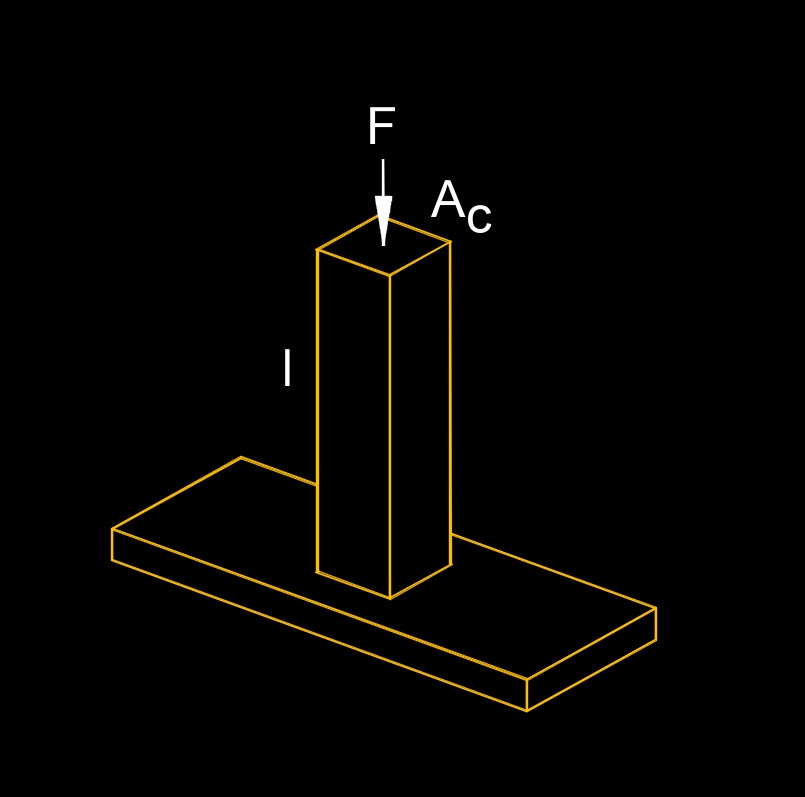Axial Stiffness
Axial Stiffness Formula |
||
|
\( k \;=\; \dfrac{ F }{ \delta }\) (Axial Stiffness) \( F \;=\; k \cdot \delta \) \( \delta \;=\; \dfrac{ F }{ k }\) |
||
| Symbol | English | Metric |
| \( k \) = Stiffness | \(lbf\) | \(N\) |
| \( F \) = Applied Force | \(lbf\) | \(N\) |
| \( \delta \) (Greek symbol delta) = Deflection | \(in\) | \(mm\) |
 Axial stiffness, abbreviated as k, is the ability of a structure or component to resist deformation or displacement along its axial or longitudinal direction. It is a measure of the resistance to axial loads or forces applied parallel to the longitudinal axis of the object. In mechanical engineering and structural analysis, axial stiffness is typically quantified by the axial stiffness coefficient or axial stiffness constant. This coefficient represents the relationship between the axial force applied to a structure and the resulting axial displacement or elongation.
Axial stiffness, abbreviated as k, is the ability of a structure or component to resist deformation or displacement along its axial or longitudinal direction. It is a measure of the resistance to axial loads or forces applied parallel to the longitudinal axis of the object. In mechanical engineering and structural analysis, axial stiffness is typically quantified by the axial stiffness coefficient or axial stiffness constant. This coefficient represents the relationship between the axial force applied to a structure and the resulting axial displacement or elongation.
Axial Stiffness for a Body in Tension Formula
|
||
|
\( k \;=\; \dfrac{ A_c \cdot E }{ l }\) (Axial Stiffness) \( A_c \;=\; \dfrac{ k \cdot l }{ E }\) \( E \;=\; \dfrac{ k \cdot l }{ A_c }\) \( l \;=\; \dfrac{ A_c \cdot E }{ k }\) |
||
| Symbol | English | Metric |
| \( k \) = Stiffness | \(lbf\) | \(N\) |
| \( A_c \) = Area Cross-section | \(in^2\) | \(mm^2\) |
| \( E \) = Young's Modulus | \(lbf\;/\;in^2\) | \(Pa\) |
| \( l \) = Length of Body | \(in\) | \(mm\) |
The axial stiffness of a structure or component depends on its material properties, geometrical configuration, cross-sectional area, and boundary conditions. It is typically determined through analytical calculations, numerical simulations, or experimental testing. Engineers and designers consider axial stiffness to ensure structural integrity, optimize performance, and meet design requirements in various fields of engineering.

